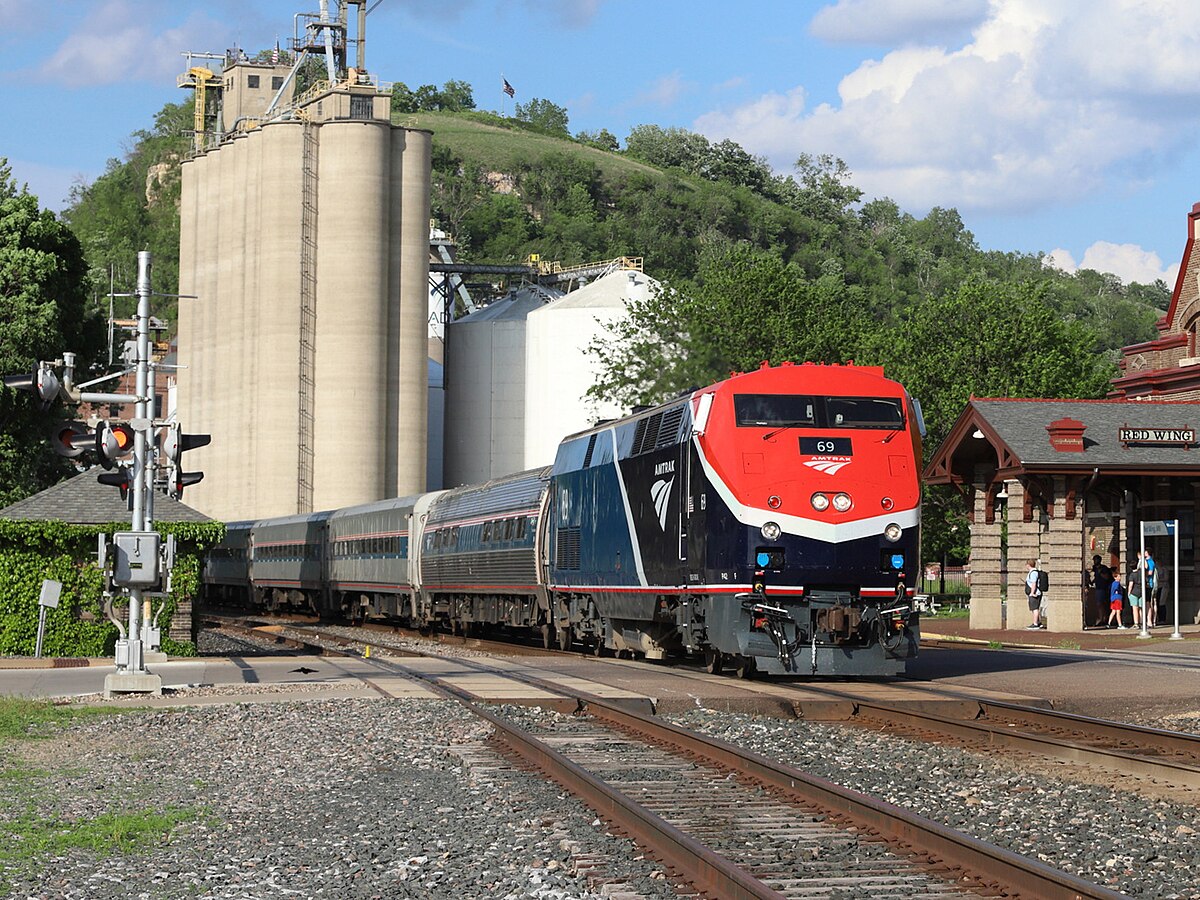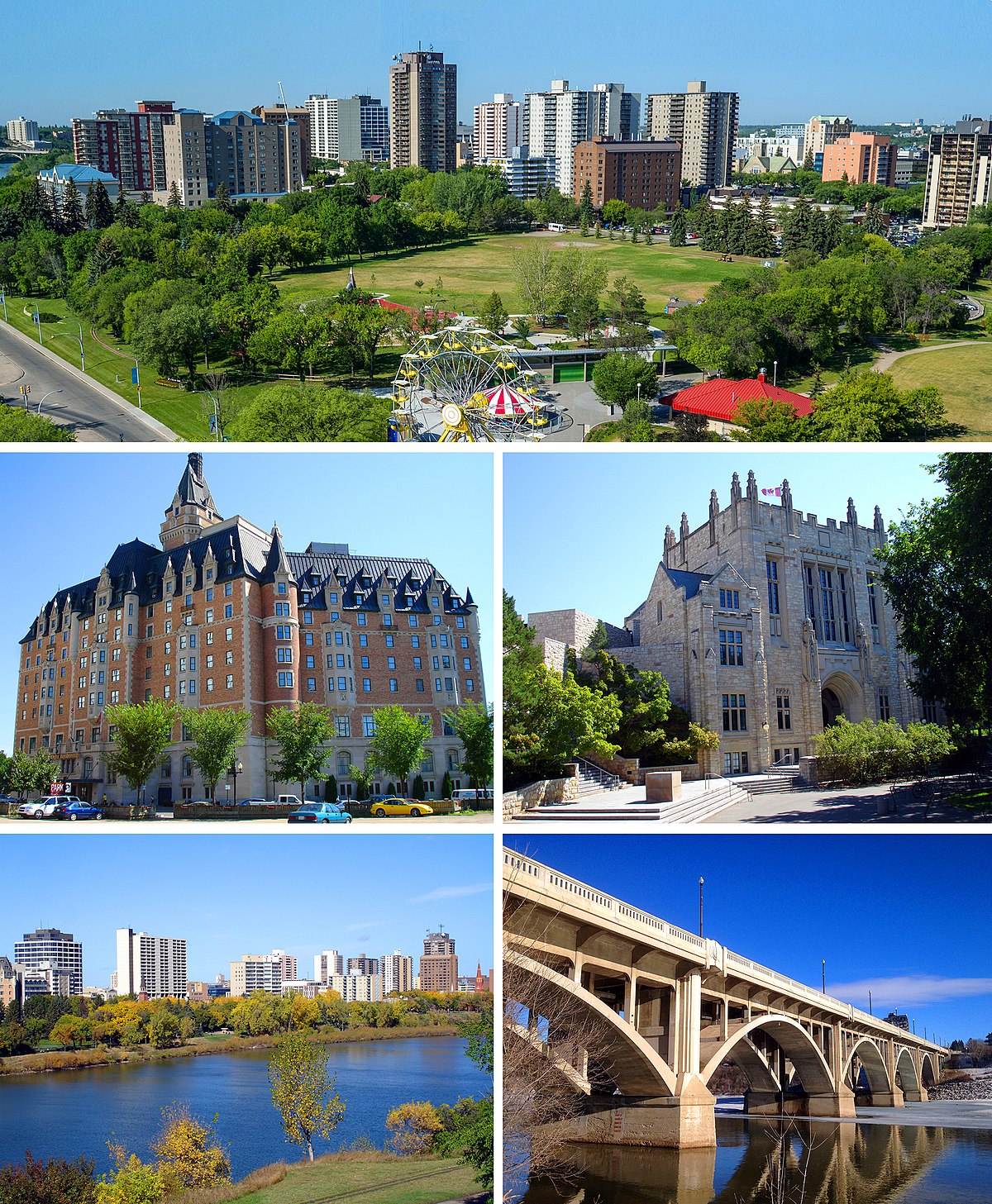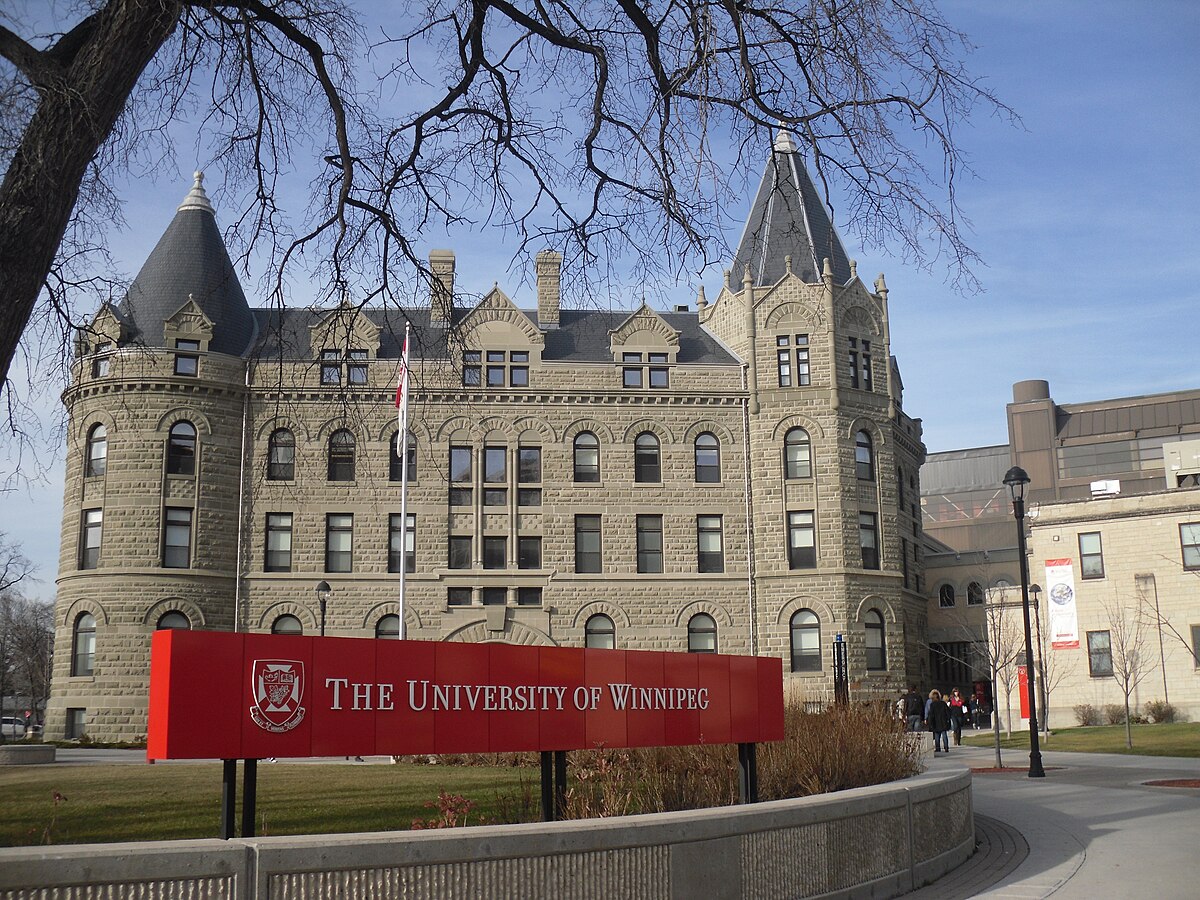Urban Sky
Senior Member
Tracks can only be abandoned after successfully filing an abandonment request, at which point VIA could buy the line for scrap value…But what if some or all the track would be abandoned otherwise?
Tracks can only be abandoned after successfully filing an abandonment request, at which point VIA could buy the line for scrap value…But what if some or all the track would be abandoned otherwise?
How much did buying the Chatham, Alexandria and Brockville subdivisions cost, and which government came up with the $ for that? (I looked but couldn’t discern it from the search results)

To be honest, I feel no paranoia and would welcome VIA's demise since it would likely be a catalyst for the provincialisation of intercity rail.

"The Amtrak Borealis, a new rail line connecting Chicago and Minneapolis-St. Paul, has only been operating for about a month, but already thousands of passengers have taken the trip. That ridership has exceeded Amtrak’s expectations—and hints at the growing desire among Americans to travel by train. "
"Amtrak’s Borealis launched on May 21. In June, the line’s first full month of service, it saw more than 18,500 riders. That averages about 300 passengers a day, in each direction."
"That total ridership exceeded Amtrak’s forecasts—which Ray Lang, vice president of Amtrak State Supported Service, says were already “very optimistic”—by 2,900 passengers. “What that really means,” he adds, “is that there’s a strong demand for short-distance corridor trains in the United States to provide that transportation option for travelers that don’t want to drive or fly.” "
"“What we’ve done here is really increased the level of utility and become a more relevant transportation provider,” Lang says. "
". For many of those passengers, they may not want to have a car on campus, flying often doesn’t make sense, and they may find the intercity bus network lacking. In June, for example, Coach USA—which operates buses between Madison, Milwaukee, Chicago, and other routes—filed for bankruptcy. "

Borealis (train) - Wikipedia
en.wikipedia.org
| City | State(s) | Population 2020 Census[2] |
| Chicago-Naperville-Joliet | IL | 9,618,502 |
| Milwaukee-Waukesha | WI | 1,574,731 |
| Minneapolis–St. Paul–Bloomington | MN, WI | 3,690,261 |
| Geographic name | Province | Population |
| Toronto | Ontario | 6,202,225 |
| Ottawa–Gatineau | Ontario/Quebec | 1,488,307 |
| Montreal | Quebec | 4,291,732 |
That’s good to hear but shouldn’t come as any great surprise. Canadians often underestimate the population of American cities. The populations of the metropolitan areas on the route are as follows;
City State(s) Population 2020 Census[2] Chicago-Naperville-Joliet IL 9,618,502 Milwaukee-Waukesha WI 1,574,731 Minneapolis–St. Paul–Bloomington MN, WI 3,690,261
That isn’t all that different from the TOM corridor, though the overall distance of the Borealis is a tiny bit further.
Geographic name Province Population Toronto Ontario 6,202,225 Ottawa–Gatineau Ontario/Quebec 1,488,307 Montreal Quebec 4,291,732
| Geographic Name | Province | Population |

Calgary - Wikipedia | Alberta | 1,306,784 |

Edmonton - Wikipedia | Alberta | 1,010,899 |

Saskatoon - Wikipedia | Saskatchewan | 266,141 |

Regina, Saskatchewan - Wikipedia | Saskatchewan | 226,404 |

Winnipeg - Wikipedia | Manitoba | 749,607 |
Friendly reminder (seeing that our resident troll is already getting overly excited) that the ridership potential of the Q-W Corridor dwarfs that of any Western Canadian „corridors“:That’s good to hear but shouldn’t come as any great surprise. Canadians often underestimate the population of American cities. The populations of the metropolitan areas on the route are as follows;
City State(s) Population 2020 Census[2] Chicago-Naperville-Joliet IL 9,618,502 Milwaukee-Waukesha WI 1,574,731 Minneapolis–St. Paul–Bloomington MN, WI 3,690,261
That isn’t all that different from the TOM corridor, though the overall distance of the Borealis is a tiny bit further.
Geographic name Province Population Toronto Ontario 6,202,225 Ottawa–Gatineau Ontario/Quebec 1,488,307 Montreal Quebec 4,291,732
That's not really an apples to apples comparison. For Chicago you've included not just Chicago and it's neighbouring cities, and includes parts of Wisconsin and Indiana. And although the northwest of Indiana might be fare game, it actually stretches all the way around Lake Michigan, to Michigan!That’s good to hear but shouldn’t come as any great surprise. Canadians often underestimate the population of American cities. The populations of the metropolitan areas on the route are as follows;
City State(s) Population 2020 Census[2] Chicago-Naperville-Joliet IL 9,618,502 Milwaukee-Waukesha WI 1,574,731 Minneapolis–St. Paul–Bloomington MN, WI 3,690,261
That isn’t all that different from the TOM corridor, though the overall distance of the Borealis is a tiny bit further.
Geographic name Province Population Toronto Ontario 6,202,225 Ottawa–Gatineau Ontario/Quebec 1,488,307 Montreal Quebec 4,291,732

In other words, build what is needed. Amtrak took a chance and it is showing that one more frequency was needed and is being well used. If Via ever has the budget and equipment, maybe they could learn from Amtrak. Most of Canada, outside of the Corridor does not need more than 1 train a day. If we look at the Empire Builder,along parts of it it has up to 2 other services complementing the Empire Builder service. Where the most demand is, has more frequency. So, if we use that idea and look at any of the LDS in Canada and apply it there, Using the Canadian or the Ocean, there are parts of it that will only ever see it. In fact, with the Ocean, the section between Montreal and Quebec City (Levis) also have Corridor trains on them. A Saint Jon - Halifax route has been discussed, but no Levis - Moncton route has been, for good reason. There really isn't the demand. So, take what we have, and complement where it can work and be able to support itself.The people who wish to ride the land yacht can,and the people that want realistic,useful transportation also can.Let‘s also not forget that we are talking about one single daily frequency, which doubled the existing daily frequency (the Empire Builder) between Milwaukee and Minneapolis, two cities which are indeed almost the same distance as Toronto-Montreal (325 vs. 335 miles):
View attachment 582520
Source: NARP
Note: additional Amtrak services operate between Chicago and Milwaukee (7 trains per day, including the Borealis, but excluding the Empire Builder which doesn‘t carry local traffic on this segment)
The demand is probably strong enough to support a third frequency, but certainly nothing close to the 6 daily frequencies we have between Toronto and Montreal…
To be honest, I don't personally see interprovincial routes as a priority. The Canadian, Ocean, and Skeena are all rather uncessesary services that aren't entirely worthy of their subsidies, but maybe not worth the agony of cutting right now.Regarding the idea of a “Provincialization of intercity rail” (assuming that any province could possibly be tempted into taking over the finacial responsibility for VIA services), here is a list of VIA’s current routes and the respective provinces they serve:
Corridor services:
Non-Corridor services:
- QBEC-MTRL: QC
- MTRL-OTTW: QC, ON
- MTRL-TRTO: QC, ON
- OTTW-TRTO: ON
- TRTO-LNDN/SARN/WDON: ON
- Maple Leaf: ON, NY
How many different provincial railways would we need to operate such a network? And what would we do with the interprovincial services (i.e., the overwhelming majority of VIA services) or where intraprovincial services overlap with interprovincial ones (e.g., TRTO-OTTW with TRTO-OTTW or soon: Chaleur with the Ocean)?
- Ocean: NS, NB, QC
- MTRL-JONQ/SENN: QC
- Canadian: ON, MB, SK, AB, BC
- SUDB-WHTR: ON
- WNPG-CHUR: MB, SK
- JASP-PRUP: AB, BC
If Ontario wants to have better VIA service, they can always give VIA money to do so (as they did in the early 1990s with trains 82/83) or just expand their own provincial services. Same goes for buying the western end of the Guelph Sub and making it faster than the Dundas route, so that VIA can focus its TRTO-LNDN/WDON/SARN services on that route.
Oh, and let’s not forget over all that hysteria about prospective fiscally conservative governments that the only federal government which has invested substantial amounts into VIA’s Corridor infrastructure (partial triple-tracking of the Kingston Sub) and non-Corrdior fleet (creation of Prestige Class) was the one led by … *drumroll* … Stephen Harper.
When it comes to Amtrak, many of the states pay for part of the service to run. So, it could be one thing that could make the difference. Then the provinces could focus where they want to without needing to pay for it all.To be honest, I don't personally see interprovincial routes as a priority. The Canadian, Ocean, and Skeena are all rather uncessesary services that aren't entirely worthy of their subsidies, but maybe not worth the agony of cutting right now.
The only sticking point is TO/OTT to Montreal, but while I don't have a good answer for that now, the demand is arguably there so I'm sure Quebec and Ontario could come to an understanding on funding such a service. Even then, I don't see it as a huge priority given the resurgence in the Quebec Sovereignty movement.
But to your point on the Guelph Subdivision, I wouldn't be comfortable with Ontario handing the federal government money to improve a service. If Ontario makes an investment, it should be in control. If Ontario is required to hand over money to improve a transport service where the federal government is not, perhaps the federal government should step aside. Otherwise, if VIA insists on retaining its routes where Ontario is providing funding, Ontario should move in with an attempt to run VIA off the route in a similar manner to what happened with Niagara Falls and Kitchener.
I agree that the economic case for operating non-clrridor services is flimsy at best (though in the case of the Canadian only when a fleet-renewal happens to be overdue), but good luck getting the federal taxpayer to comit any money for providing capital (let alone: operating) funding once we‘ve gotten rid of VIA as Canada‘s passenger railroad. It‘s indeed not worth the agony.To be honest, I don't personally see interprovincial routes as a priority. The Canadian, Ocean, and Skeena are all rather uncessesary services that aren't entirely worthy of their subsidies, but maybe not worth the agony of cutting right now.
Provided that HxR goes ahead as promised (either in the slower HFR or the faster HSR variant), isn‘t this a moot point by now?The only sticking point is TO/OTT to Montreal, but while I don't have a good answer for that now, the demand is arguably there so I'm sure Quebec and Ontario could come to an understanding on funding such a service.
The what? May I ask you when was the last time you stepped a foot into Quebec or talked to any Québecois(e)? The francophone majority might still not see the inclination to celebrate Canada Day (and honestly, why would anyone, given how we still treat the people from which we stole the lands to build our country?), but the question of independence is as irrelevant in the public mood here in Quebec, as it is in Bavaria, Scotland or Catalunya…Even then, I don't see it as a huge priority given the resurgence in the Quebec Sovereignty movement.
VIA will run increased services wherever it has the available fleet and incremental revenues exceed the incremental. If Ontario purchases the Western half of the Guelph Sub and fixes the slow orders while adding more sidings, any connection offered by VIA over the Northern route will have a much higher chance of becoming a viable business opportunity for VIA, while Ontario would retain full control through owning the infrastructure. That the Weston/Halton/Guelph Subs will become the primary routing for intercity trains towards SWO is an inevitability, but the Ontarian government holds all the keys to speed up or delay that transition.But to your point on the Guelph Subdivision, I wouldn't be comfortable with Ontario handing the federal government money to improve a service. If Ontario makes an investment, it should be in control. If Ontario is required to hand over money to improve a transport service where the federal government is not, perhaps the federal government should step aside.
The federal government announced and executed cuts to the Kitchener and Niagara Falls routes in 2012, GO started expanding its own services only afterwards, as exemplified for Niagara Falls on Wikipedia:Otherwise, if VIA insists on retaining its routes where Ontario is providing funding, Ontario should move in with an attempt to run VIA off the route in a similar manner to what happened with Niagara Falls and Kitchener.
Ontario stepped up when VIA chose to sacrifice some SWO services when faced with budget cuts, not the other way round (i.e., Ontario forcing VIA to reduce its SWO services).In 2012, as a result of federal funding cuts Via Rail Corridortrips between Toronto and Niagara Falls were discontinued, leaving only the single daily Via/Amtrak Maple Leaf service between Toronto and New York. In October 2012, the ticket agent was eliminated, replaced by an automated kiosk.[5]
GO Transit operated summer 'excursion' trains to Niagara Falls on weekends and holidays in 2009 and 2010, making them permanently recurring in 2011. Starting in January 2019, it also began operating a single weekday train trip to and from Niagara Falls. In September 2019, the formerly summer-only weekend train service was extended year-round.




